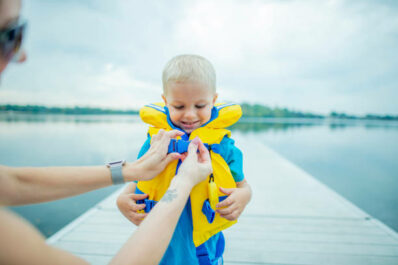According to the American Heart Association (AHA), approximately 400,000 people die from sudden cardiac arrest each year in the US. About 80% of cardiac arrests happen at home. Learning CPR increases the victim’s chance of survival by 40%. Learning CPR is something everyone needs to do, but did you know there are different types of CPR?
Different Types of CPR & Life Saving Courses
CPR, or cardiopulmonary resuscitation, is a lifesaving technique used in emergency situations such as a heart attack, stroke, or near drowning. CPR often uses a combination of chest compressions and artificial ventilation to preserve brain function and restore blood circulation and breathing.
[bctt tweet=”When looking into becoming trained in CPR, it is important to understand the different types of CPR so you can best decide which is the best class for you to take.” via=”no”]
Here are some of the different types of CPR classes available.
Basic Life Support CPR
A basic life support CPR class (or BLS) is for anyone wanting to obtain a CPR certification from the American Heart Association. This type of certification is usually taken by nurses, doctors, babysitters, paramedics, and security guards.
Advanced Cardiac Life Support
If you wish to expand your knowledge of CPR and life saving, the advanced cardiac life support (ACLS) certification is what you are looking for. The ACLS requires you to already have your BLS and is mostly taken by doctors, nurses, paramedics, respiratory therapists, and other professionals.
Pediatric Advanced Life Support
Like the ACLS, the pediatric advanced life support (PALS) certification is for those looking to expand their knowledge–especially when it pertains to pediatric patients. A BLS certification is also required, as well as basic knowledge of cardiac pharmacology and a current copy of the American Heart Association PALS book.
Heartsaver First Aid & CPR
The Heartsaver course covers first aid training, CPR, and education on how to properly use an AED (Automated External Defibrillator). This course is not for healthcare professionals, but typically for fitness trainers, babysitters, construction workers, and other safety professionals.
Find the Right CPR Class For You
There is no denying the fact that you, along with everyone around you, need to be trained in CPR and life-saving. When deciding on which is the best class for you, consider your job position (are you a health professional), whether you are around small children or infants a lot of the time, and whether you want to become certified with AEDs, as well.
To learn more about the different types of CPR courses, and which is the best one for you, Contact Us.





